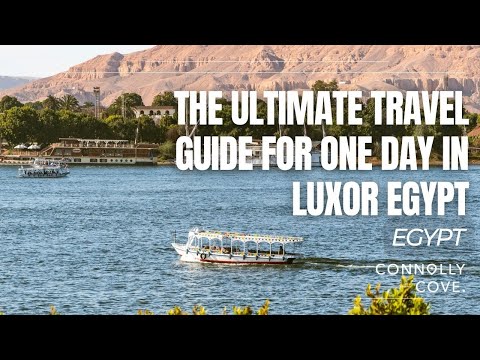
Nestled on the east bank of the Nile River, Luxor, often hailed as the world’s greatest open-air museum, encapsulates millennia of Egyptian history. This city, which was once the ancient capital of Thebes during the New Kingdom of Egypt, offers a treasure trove of ruins, temples, and tombs that tell tales of pharaohs and ancient gods. If you have just one day to explore Luxor, this guide will help you make the most of your journey through this incredible slice of history.
## Morning: Karnak Temple Complex
Begin your day early at the Karnak Temple Complex. As one of the largest religious buildings ever constructed, the temple complex dedicated to Amun-Ra is a spectacular start. It spans over 200 acres and its construction spanned over 1,500 years. Highlights include the Great Hypostyle Hall with its 134 massive columns and the sacred lake used for purification rituals. Hiring a guide can enrich your experience as they explain the complex’s storied past and architectural marvels.
## Mid-Morning: Luxor Temple
After Karnak, head to Luxor Temple via Avenue of Sphinxes—a once-grand thoroughfare connecting Karnak and Luxor temples lined with human-headed sphinxes. Luxor Temple is smaller but equally fascinating with its majestic statues and carvings that illuminate ancient celebrations like Opet Festival depicted on its walls. This site uniquely highlights Roman additions alongside typical Egyptian architecture due to its continued use by Romans after they conquered Egypt.
## Lunch: Taste Local Egyptian Cuisine
For lunch, indulge in local cuisine at a nearby restaurant such as Sofra Restaurant & Café or Al-Sahaby Lane Restaurant located in central Luxor. Sample traditional dishes like ta’ameya (Egyptian falafel), koshari (a mix of pasta, rice, lentils topped with tomato sauce), or luxuriant molokhia (leafy green soup).
## Afternoon: Valley of the Kings
Post-lunch provides a perfect time to cross to Luxor’s West Bank where many nobles were laid to rest; this includes visiting the famed Valley of the Kings—the burial site for kings and privileged nobles from New Kingdom dynasties. Here lies over 60 tombs including those of Tutankhamun and Ramses II. Purchase tickets that allow entry into multiple tombs (note that each tomb has separate charges) and consider an additional ticket for King Tutankhamun’s tomb.
## Late Afternoon: Hatshepsut’s Temple
Continue exploring West Bank by heading to Mortuary Temple of Hatshepsut at Deir el-Bahari—an architectural marvel set against steep cliffs presenting dramatic colonnaded terraces which reflect detailed relief scenes depicting Queen Hatshepsut’s divine birth and trading expeditions to Punt.
## Sunset: Felucca Ride on Nile River
As evening approaches head back towards East Bank for a serene felucca ride on Nile River around sunset time—this traditional wooden sailboat offers splendid views especially as dusk sets over Nile waters reflecting golden hues onto temples you visited earlier in day creating memories lasting lifetime.
## Dinner by Nile or Explore Local Markets
Conclude your whirlwind tour with dinner at one among several riverside restaurants offering both global cuisines complemented by panoramic Nile views; alternatively explore vibrant local markets such as Souk area near Luxor temple where you can haggle over souvenirs from alabaster vases to handcrafted jewelry.
### Essential Tips:
– **Wear Comfortable Shoes**: You’ll do quite a bit walking.
– **Hydration is Key**: Temperatures can soar so keep water handy.
– **Respect Cultural Norms**: Dress modestly keeping shoulders & knees covered.
– **Early Start**: Begin your day early not only avoid crowds but also harsh sun during noontime hours.
Luxor packs an incredible amount into one city—from monumental temples revealing stories from antiquity framed against changing skies offering both awe-inspiring heritage alongside thrilling present-day culture making any trip however brief filled with tales waiting be told again upon return home!
